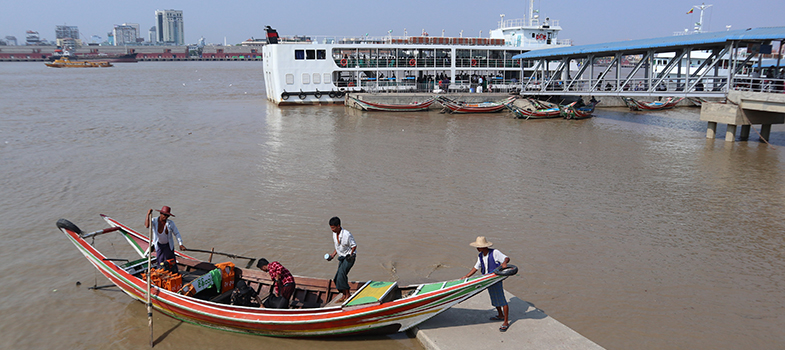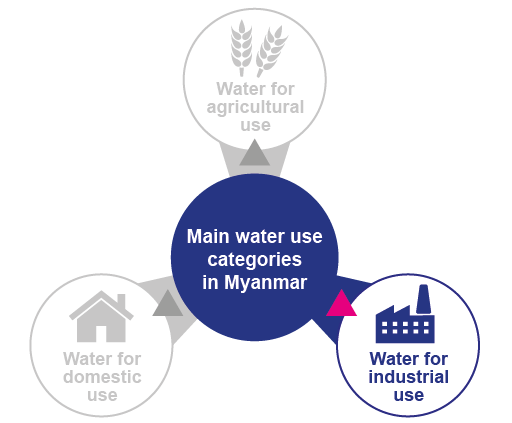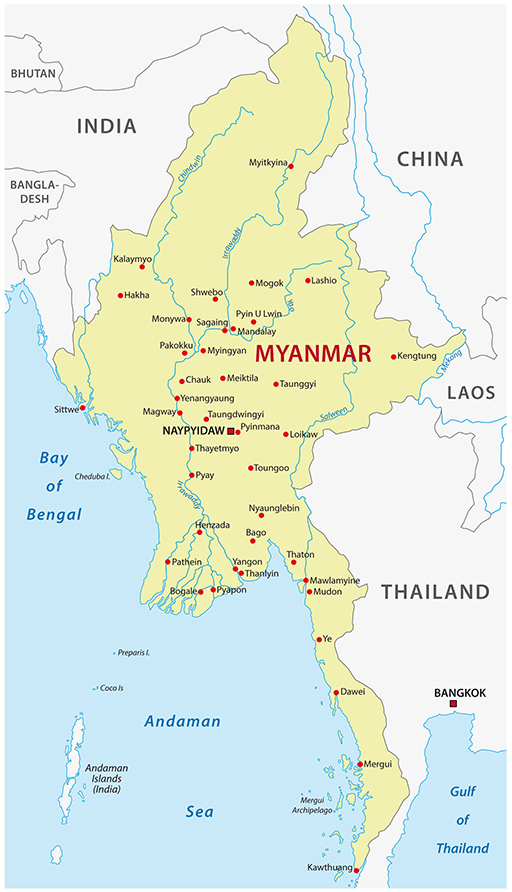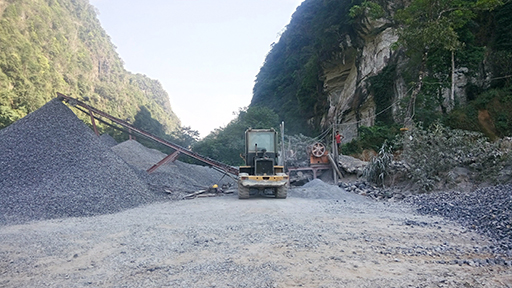2.7 Water for industrial use
Industry contributes 34.5% to GDP. Principal uses of water in industries are for processing, product treatment, cleaning, and cooling. Large water intensive industries are sugar mills, paper mills and cement industries. On average, ground water supplies 22% of the total industrial water use in Myanmar (Pavelic. et al., 2015).
But an impediment to industrial growth has been access to electricity, as Myanmar has some of the world’s lowest electrification and electricity usage rates. Industry is forced to rely on expensive back-up generators, despite Myanmar having abundant electricity-generating resources in the form of hydropower, new gas fields and large renewable sites (solar and wind).
Infrastructure development is necessary for these resources to be harnessed to meet the growing demand for electricity in the country. The two most important industries using water in Myanmar are hydropower production and mining, with other industry use being small by comparison, but growing.
Hydropower is energy that can be harnessed from a continuous flow of water, such as a river. It is a renewable source of energy because the water cycle is constantly renewed by the sun. Modern hydropower plants produce electricity using turbines which spin with the moving water. They are connected to a generator where the energy is stored as electricity.
Myanmar has been accelerating its hydropower development. Generating hydroelectric power enhances foreign exchange earnings through exports and regional cooperation as well (UNDP, 2013). Myanmar has the potential to be an energy bridge between South Asia and Southeast Asian energy systems, due to its convenient location between these geographical and political regions (World Bank 2007).
Hydropower also offers a renewable source to meet the country’s growing domestic electricity needs.
In 2014, hydropower comprised two-thirds of Myanmar’s different energy sources to meet its energy consumption needs, known as its energy mix, with 3,151 MW of installed capacity from 25 operational projects. Myanmar has the potential for more than 100 GW of hydropower, of which only 3 GW has been developed so far (IHA, 2015). Another 46 GW of technically feasible potential has been identified, and a number of these projects, mostly hydropower dams, are now under construction or at an advanced planning stage commissioned by the Ministry of Electricity and Energy working with Western developers (IHA, 2015). The largest potential is to be found in the Kayin, Shan, and Kayah states, where the Salween River is the major hydropower resource (IHA, 2015).
Myanmar’s electrification rate is only 35% of the country and energy needs are growing rapidly. In 2013, Myanmar’s per-head electricity consumption was 156 kWh, which compares poorly with other Southeast Asian countries, such as Laos (506 kWh), Vietnam (1,285 kWh) and Thailand (2,426 kWh). Regular power cuts also suggest that demand is a long way from being satisfied.
Hydropower measurement
These are the orders of magnitude of energy, k is kilo, M is mega, G is Giga and T is Tera.
- 1 kiloWatt KW - 1000 Wh
- 1 megaWatt MW - 1,000,000 Wh
- 1 gigaWatt GW - 1,000,000,000 Wh
Mining is also a major user of water resources for mineral extraction, as well as milling of mined materials, and injection of water for secondary oil recovery or for unconventional oil and gas recovery, such as hydraulic fracturing.
Myanmar is richly endowed with mineral resources including copper, gold, lead, zinc, silver, tin and nickel. It also has extensive gemstone deposits, and oil and natural gas fields. Many areas of the country are yet to be explored for their mineral wealth. In 2017–18, mining contributed under 5% to the country’s GDP, although it accounted for 20% of the country’ revenue from exports (EITI, 2018). However, whilst mining is an important foreign exchange earner, it is not a big employer, with only 0.3% of the workforce working in an extractive industry (EITI, 2018).
2.6 Water for domestic use – drinking, preparing food and washing



